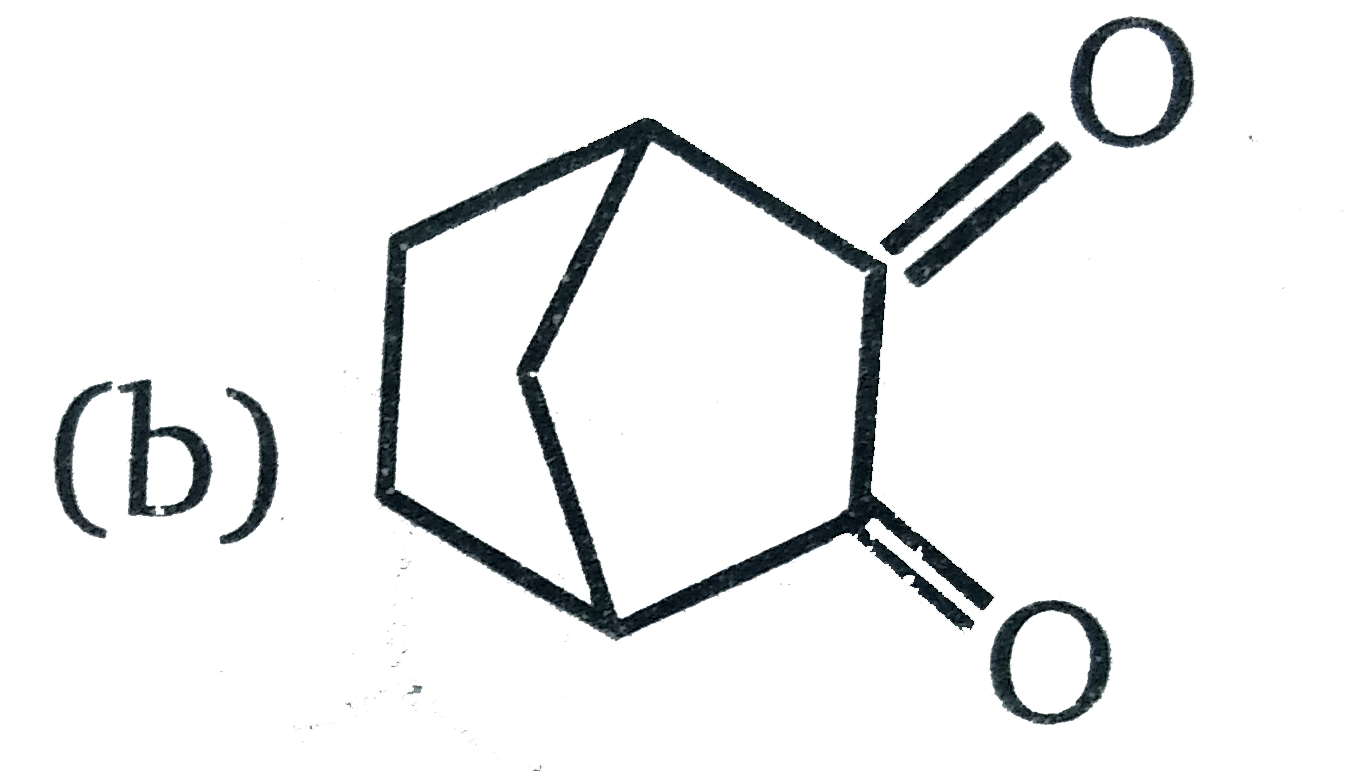Which of the following compounds would you expect to be strongest carbon acid ?


CH2(CO2Et)2
CH3COCH2COOC2H5
The correct Answer is:D
To determine which of the given compounds is the strongest carbon acid, we need to analyze the stability of the conjugate bases formed when the acidic hydrogen is removed (deprotonation). The more stable the conjugate base, the stronger the acid.
1. Identify the Compounds: Let's denote the four compounds as A, B, C, and D. We need to analyze the acidic hydrogen in each compound and the stability of the resulting anion (conjugate base) after deprotonation.
2. Analyze Compound A:
- The acidic hydrogen is located at the bridgehead position.
- When deprotonated, the anion formed is unstable due to its position.
- There is no resonance stabilization available for this anion because it is in a bridgehead position, which leads to instability.
3. Analyze Compound B:
- Similar to compound A, the acidic hydrogen is also at the bridgehead position.
- The anion formed here is also unstable and lacks resonance stabilization.
- Therefore, compound B is also not a strong acid.
4. Analyze Compound C:
- The acidic hydrogen is attached to a carbon adjacent to a carboxylate group (C-O-O).
- Upon deprotonation, the anion formed can be stabilized by resonance.
- There are multiple resonance structures possible, which increases the stability of the conjugate base.
5. Analyze Compound D:
- The acidic hydrogen is adjacent to a carbonyl group (C=O) and also has ester groups.
- When deprotonated, the resulting anion can also be stabilized by resonance.
- The presence of the ketone (C=O) provides a strong electron-withdrawing effect, enhancing the stability of the conjugate base through resonance.
6. Compare Compounds C and D:
- Both compounds C and D have resonance stabilization, but compound D has a ketone which has a stronger electron-withdrawing effect compared to the ester in compound C.
- The presence of the ketone in compound D means that the conjugate base formed is more stable due to better resonance and inductive effects.
7. Conclusion:
- Since compound D has the most stable conjugate base due to the presence of a ketone and resonance stabilization, it is the strongest carbon acid among the four compounds.
Final Answer:
The strongest carbon acid among the given compounds is Compound D.
- The acidic hydrogen is located at the bridgehead position.
- When deprotonated, the anion formed is unstable due to its position.
- There is no resonance stabilization available for this anion because it is in a bridgehead position, which leads to instability.
- Similar to compound A, the acidic hydrogen is also at the bridgehead position.
- The anion formed here is also unstable and lacks resonance stabilization.
- Therefore, compound B is also not a strong acid.
- The acidic hydrogen is attached to a carbon adjacent to a carboxylate group (C-O-O).
- Upon deprotonation, the anion formed can be stabilized by resonance.
- There are multiple resonance structures possible, which increases the stability of the conjugate base.
- The acidic hydrogen is adjacent to a carbonyl group (C=O) and also has ester groups.
- When deprotonated, the resulting anion can also be stabilized by resonance.
- The presence of the ketone (C=O) provides a strong electron-withdrawing effect, enhancing the stability of the conjugate base through resonance.
- Both compounds C and D have resonance stabilization, but compound D has a ketone which has a stronger electron-withdrawing effect compared to the ester in compound C.
- The presence of the ketone in compound D means that the conjugate base formed is more stable due to better resonance and inductive effects.
- Since compound D has the most stable conjugate base due to the presence of a ketone and resonance stabilization, it is the strongest carbon acid among the four compounds.
The strongest carbon acid among the given compounds is Compound D.
Topper's Solved these Questions
- BOOK - MS CHOUHANCHAPTER - GENERAL ORGANIC CHEMISTRYEXERCISE - LEVEL- 11videos
GENERAL ORGANIC CHEMISTRY
- BOOK - MS CHOUHANCHAPTER - FAMILIES OF CARBON COMPOUNDS: FUNCTIONAL GROUPS AND INTERMOLECULAR FORCES EXERCISE - ADDITIONAL OBJECTIVE QUESTIONS ( Matrix Match Type )4videos
FAMILIES OF CARBON COMPOUNDS: FUNCTIONAL GROUPS AND INTERMOLECULAR FORCES
- BOOK - MS CHOUHANCHAPTER - GRIGNARD REAGENTSEXERCISE - Level 1 (Q.61 To Q.66)1videos
GRIGNARD REAGENTS
Similar Questions
Knowledge Check
- Question 1 - Select One
Which one of the following acids would you expect to be the strongest ?
AI−CH2COOHBCl−CH2COOHCBr−CH2COOHDF−CH2COOH. - Question 2 - Select One
Which one of the following acids would you expect to be the strongest?
AI−CH2COOHBCl−CH2COOHCBr−CH2COOHDF−CH2COOH - Question 3 - Select One
Which one of the following acids would you expect to be the strongest?
AI−CH2COOHBCl−CH2COOHCBr−CH2COOHDF−CH2COOH
Which of the folllowing carbocations would you expect to rearrange?
View SolutionWhich one of the following dienes would you expect to be the most stable ?
View SolutionIn Which of the following molecule would you expect the introgen to nitrogen bond to be longest ?
View SolutionWhich hydrogen in the following molecule would you expect to be the most acidic (i.e., most easily removed as H+ )?
View SolutionWhich hydrogen in the following molecule would you expect to be the most acidic (i.e., most easily removed as H+ )?
View Solution

